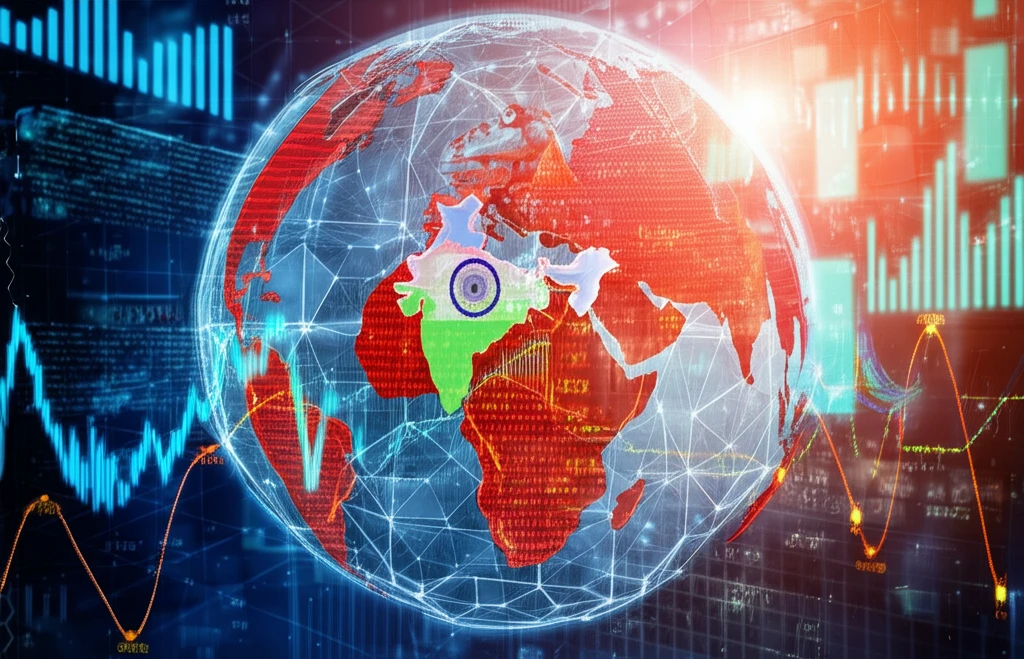
Decoding Market Tremors: How COVID-19 Changed Investment Risk Between Global Markets and India
"A Deep Dive into Volatility Spillover Effects and What They Mean for Your Portfolio"
The COVID-19 pandemic in 2020-2021 was more than just a health crisis; it was a seismic event for global financial markets. Understanding how interconnected markets transmit volatility, especially during times of crisis, is now more critical than ever for investors and policymakers alike. New research has uncovered key shifts in these dynamics between the world's leading economies (the G7) and India.
A recent study digs deep into the volatility spillover effects, examining how the pandemic altered the way risk is transmitted between these nations. By using sophisticated statistical models, the research highlights the changes in conditional correlations – a measure of how closely the markets move together – before and during the COVID-19 outbreak.
This analysis offers valuable insights for asset managers, foreign corporations, and financial regulators. By understanding these shifting volatility patterns, investors can make more informed decisions, implement effective hedging strategies, and better protect their interests against future market shocks. For regulators, this research provides critical tools for assessing systemic risk in an increasingly interconnected financial world.
What is Volatility Spillover? Understanding the Ripples in Global Markets

Imagine a stone dropped into a calm lake. The impact creates ripples that spread across the entire surface. Similarly, in finance, “volatility spillover” refers to how market movements in one country can trigger fluctuations in others. If the U.S. stock market experiences a sharp downturn, it can send shockwaves across Europe and Asia, leading to similar declines.
- Interconnectedness: Volatility spillover highlights how global markets are increasingly linked.
- Risk Management: Investors use spillover analysis to hedge their portfolios against potential shocks.
- Early Warning System: Policymakers monitor volatility spillover as an early indicator of systemic risk.
The New Landscape of Risk: Key Takeaways and Future Implications
The research paints a clear picture: the pandemic fundamentally altered volatility spillover patterns. During COVID-19, the extent of volatility spillover changed significantly compared to the pre-COVID environment. The sharp increase in conditional correlation indicates a rise in systematic risk between countries. Understanding the changing spillover dynamics is critical for asset managers and foreign corporations. They can use this information to improve investment decisions and implement effective hedging measures to protect their interests. This research will also help financial regulators assess market risk in the future, especially in the wake of crises like COVID-19, to prevent wide scale economic catastrophe.
